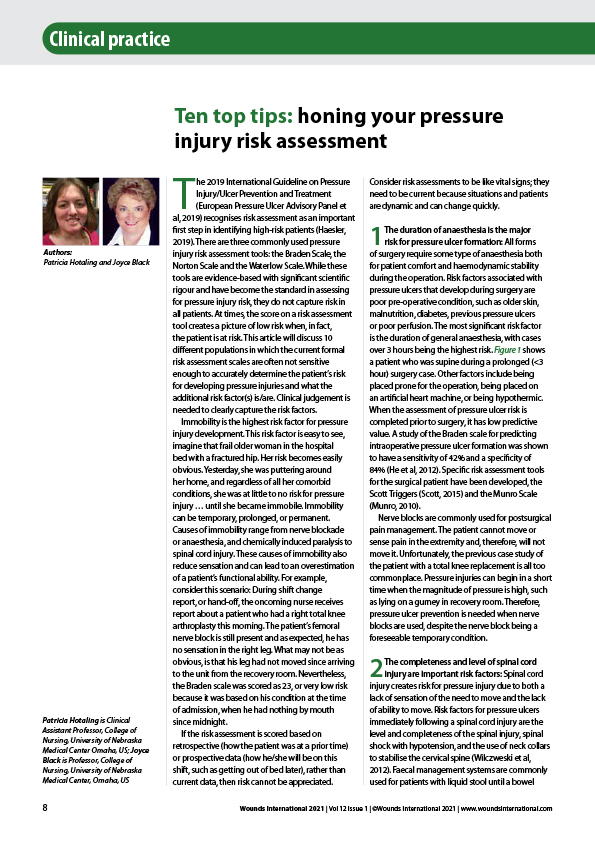The 2019 International Guideline on Pressure Injury/Ulcer Prevention and Treatment (European Pressure Ulcer Advisory Panel et al, 2019) recognises risk assessment as an important first step in identifying high-risk patients (Haesler, 2019). There are three commonly used pressure injury risk assessment tools: the Braden Scale, the Norton Scale and the Waterlow Scale. While these tools are evidence-based with significant scientific rigour and have become the standard in assessing for pressure injury risk, they do not capture risk in all patients. At times, the score on a risk assessment tool creates a picture of low risk when, in fact, the patient is at risk. This article will discuss 10 different populations in which the current formal risk assessment scales are often not sensitive enough to accurately determine the patient’s risk for developing pressure injuries and what the additional risk factor(s) is/are. Clinical judgement is needed to clearly capture the risk factors.







